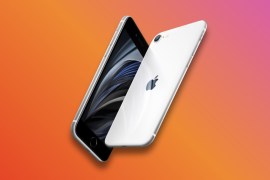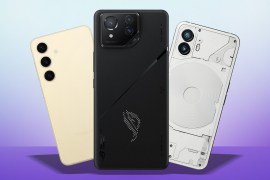10 ways Apple re-invented the iPhone
We celebrate the iPhone's fifth anniversary by taking a look at how far Apple's super-phone has come since its famous 2007 on-stage debut.
It’s been a whole five years since the late Steve Jobs shattered the foundations of the tech world with the Apple iPhone – and whether you’re firmly set in the Apple camp or are a faithful ‘droider, there’s no denying that the iPhone’s release spurred the smartphone industry onto bigger and better things. To mark the occasion, we’ve taken a look at all the improvements that Apple has lavished upon its iPhone over the years to end up with the mighty iPhone 4S.
The original iPhone had a resolution of 320×400 with 163ppi – not that anyone was counting ppi back then. Fast forward three years, though, and pixels per inch has become the buzz-phrase for all tech fans – thanks to the 640×960, 326ppi screen found on the iPhone 4 and 4S. And it’s not just phones that are packing Retina Displays now – they’ve turned up on the new iPad 3 and new MacBook Pro.
iPhone – Retina Display
Those gadgeteers blessed with long memories will remember that the original iPhone actually launched without an App Store – a notion that seems almost unthinkable today, given the hundreds upon thousands of available apps and over a billion downloads.
From its launch, just over a year after the iPhone was introduced to the world, the App Store has blossomed into a formidable force which has changed how we use our phones, transforming them from mere communication tools to games consoles, instruments and much much more. Apple were by no means the first to introduce an App Store, but they made it a polished, easy to use experience – which is mirrored in all other app stores today, including Android’s Google Play and Amazon App Stores.
Apple joined the high speed mobile data party with the iPhone 3G’s launch in 2008 and paved the way for speedy app downloads, and more recently FaceTime video calling. We’ve never looked back from our little 3G icon in the status bar. and are forever dreading the drop to the dreaded snail-paced E. Thank you, sporadic London coverage.
iPhone – App Store
Things have come a long way since ‘the cloud’ was still a fresh-faced buzzword that most people associated with bouts of precipitation. Apple’s iCloud service lets users automatically backup their music, photos, notes, contacts and appointments to the big fluffy data server in the sky.
Voice control existed long before Apple’s well-spoken digital assistant turned up on the block, but there’s no denying that Siri has thrust voice communication into the spotlight. Like it or not, we’re set for an influx of posh digital assistants, with the likes of Samsung’s S Voice and Google Play’s Evi rocking up to the voice-controlled party.
iPhone – 3G
Apple joined the front-facing camera party fashionably late and arrived bearing the gift of FaceTime – its fancy new name for face-to-face video chat, which also worked between Macs and iPhones. Previously limited to Wi-Fi-only use without a jailbreak, users can now natter away beaming their mugs across the 3G spectrum when out and about as well.
The iPhone was sorely missing this most basic of smartphone features for too long, and Apple was rightly mocked for its absence. As ever though, Cupertino arrived on the scene two years after the original iPhone’s launch with one of the slickest implementations around – an easy-to-use copy and paste system which still bests most other options currently available.
iPhone – iCloud
The lack of multitasking on iOS was a hair-tearing experience for anyone who wanted to use the iPhone for anything remotely productive. Typing an email then losing it all after double checking information in Safari made even the most hardcore Apple fan lose their cool. Happily, multitasking turned up in iOS 4 – and with a quick double click of the home button, iPhone users could flick in and out of apps to their heart’s content.
Previously known as AirTunes, which streamed music between devices, AirPlay threw in the same easy media flinging ability for photos and videos. That meant you could easily share content on your iPhone with other devices, such as Apple TV and third party docks.
iPhone – Siri
This hugely useful feature has saved many a careless or unlucky iPhone owner, enabling them to track their iDevices, lock them and wipe them completely for extra security. It’s even helped the police to track down stolen iPhones. We can only imagine the stress and worry gadgeteers had to go through without the power of Find My iPhone. Shudder.
Lovefilm interrogates Tinker Tailor Soldier Spy director – live
Dishonored hacks, slashes and shoots its way onto your screen
Pixar trains robots in the art of etiquette



